World Heritage Monuments
Fatehpur Sikri (1986), Uttar Pradesh
T he Medieval city of Fatehpur Sikri is situated on an extension of the upper Vindhyan ranges, in the environs of now dried up natural lake. Though, Fatehpur Sikri is popularly known as the Capital city of Mughal established by Akbar, it has a long cultural history prior to it. Archaeological explorations of the region have revealed pre-historic stone tools, rock shelters with paintings on the periphery of the lake. Excavations near Hada Mahal has revealed five cultural periods ranging from Ochre Coloured Pottery (c. 2nd millennium B.C.), Painted Grey Ware (c.1200-800 B.C.), Northern Black Polished Ware (c. 6th-2nd cent. B.C.), Sunga-Kushan (c. 2nd cent. B.C. to 2nd cent A.D.) and Medieval period.
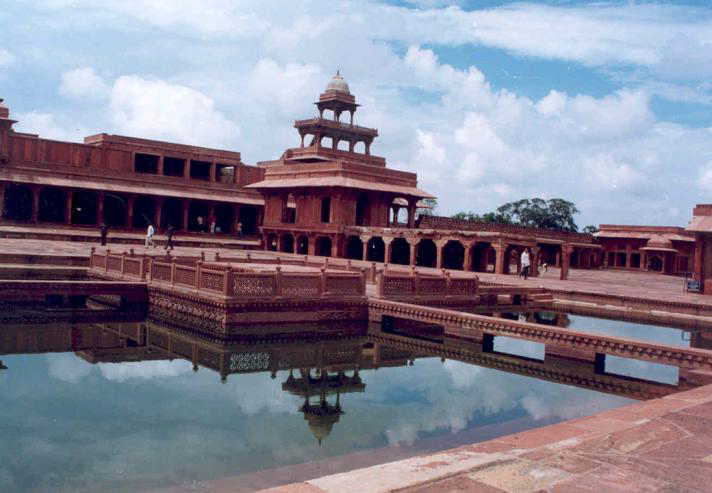
Sikri has been mentioned in the Mahabharata as ‘Saik’ meaning ‘a region surrounded by water’. An inscription found on the stone sculpture of Jaina Saraswati (dated 1010 A.D.) discovered from excavation at Bir Chhabili Tila mentions this place as ‘Sekrikya’, which seems to be a similar derivative.
Babur visited here on the eve of the Khanwah battle in A.D. 1527 and mentioned it as ‘Sikri’ in his Memoirs. He founded here a garden, a Jal-Mahal (water palace) and a baoli (step-well) to commemorate his victory in the Khanwah battle.
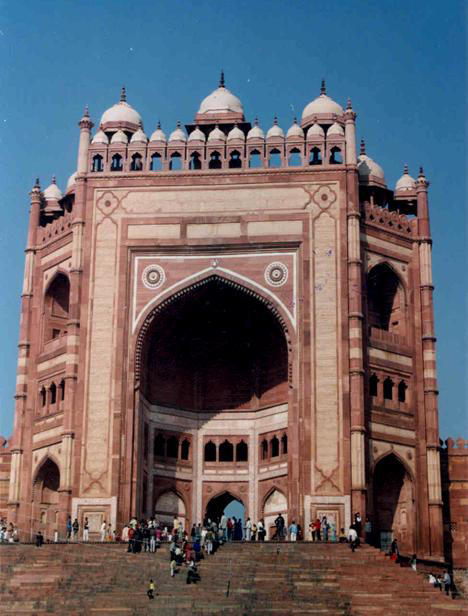
Akbar (A.D.1556-1605), grandson of Babur shifted his residence and court from Agra to Sikri, for a period of 13 years, from 1572 to 1585. to honour the Sufi saint Sheikh Salim Chishti, who resided here (in a cavern on the ridge). Akbar revered him, very much as the Saint had blessed him with a son named Salim in 1569. He ordered lofty buildings to be raised for his use, and houses for the public. Thus grew a great city with charming palaces and institutions. Akbar gave it the name of Fathabad after victory over Gujarat and which in later days “came to be known as Fathpur Sikri”. After Gujarat victory he constructed Buland Darwaza of Dargah Complex which now regarded as the tallest gateway of Asia. English traveler Ralph Fitch who visited Fatehpur Sikri in 1585 A.D. mentions “Agra and Fatepore are two very great cities, either of them much greater than London and very populous’. However, in 1585 A.D., Akbar and his court left Fatehpur Sikri for Lahore never to return again. Political exigencies made him move his capital to Lahore. Jahangir stayed here for three months and the 28th Solar birthday of the prince Khurram was celebrated here in 1619 A.D.
Practically, all Mughal institutions such as the ‘Ibadat-Khanah’, ‘Din-i-Ilahi’, ‘Tarikh-i-Ilahi’ , Jharokha-Darshan, the doctrine of Sulh-i-Kul and a policy of liberal patronage to indigenous arts and literatures, were founded here. It was also here that workshops of various handicrafts were established.
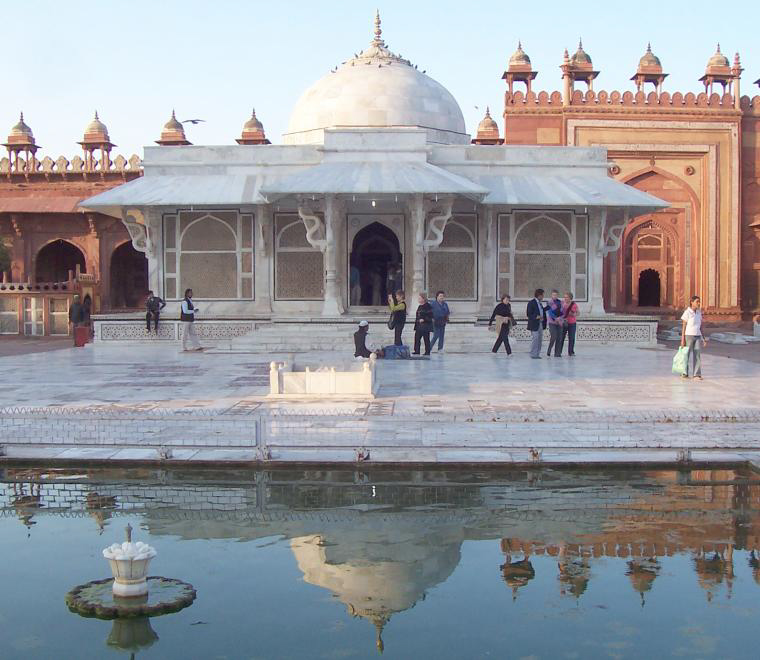
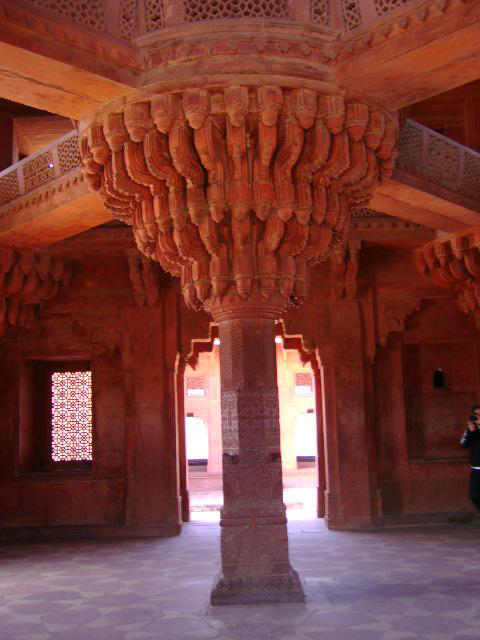
Sikri was the first planned city of the Mughals. The slopping levels of the city were connected into terraces which were utilised for various complexes such as Jami Masjid, Buland- Darwazah and tomb of Sheikh Salim Chishti; Mahal-i-Ilahi, Shahi-Bazar, Mina-Bazar, the Panch-Mahal, Khwabgah, Shahi Kutub-Khanah, Anup-Talao, the Hall of the Unitary Pillar, Chaupar and Diwan-i-Am. The efficient system of drainage and water-supply adopted here suggest an extremely intelligent and thought out town-planning by the Mughal emperor.
The architecture of Fatehpur Sikri has a definite all-India character. The palaces were built of red sandstone in the trabeate beam-and-post order. Domes have been used sparingly. Sometimes corbelled pendentives have been employed in the transition phase.
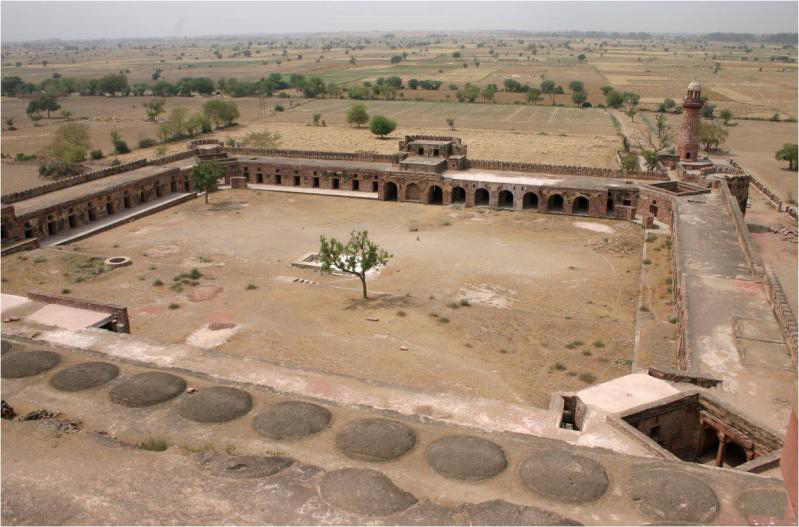
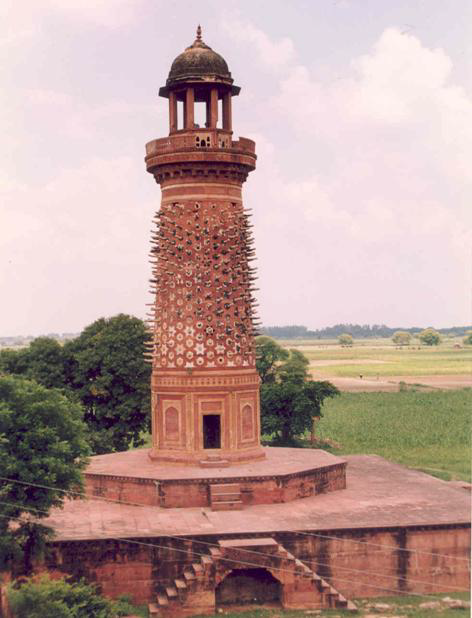
There are 93 monuments in an around Fatehpur Sikri protected and maintained by the Archaeological Survey of India. UNESCO has declared Fatehpur Sikri as an World Heritage Site in 1986. The monuments of Fatehpur Sikri may be broadly classified as Palace Complex, Dargarh Complex, City wall with Gateways, Hammams, Treasury, Water works, Tanks and Baoli. House of Noblemen, Sarai and minars.
VISITOR INFORMATION:
OPENING HOURS- Sunrise to SunsetENTRY FEE:
Free entry: Children below 15 years
Indian Visitor and citizen of SAARC and BIMSTEC countries:
Total Rs.30.00 (Rs.30.00 by ASI and Rs.10.00 by ADA as Toll tax).
Other Foreign Visitor
Total Rs.510 (Rs.500.00 by ASI and Rs.10.00 by ADA as Toll tax).
(Note: Foreign Visitors including Citizen of SAARC and BIMSTEC countries who purchase Agra Development Authority (ADA)'s Pathkar (Toll Tax ticket of Rs.500/- at any of the five monuments of Agra viz Taj Mahal, Agra Fort, Fatehpur Sikri, Akbar's Tomb, Itimad-ud-Daulah's tomb need not to purchase any other Toll Tax (Pathkar) ticket, if he/she visits the above listed monuments on the same day.).
On Friday ADA do not levy any Toll Tax in monuments.








